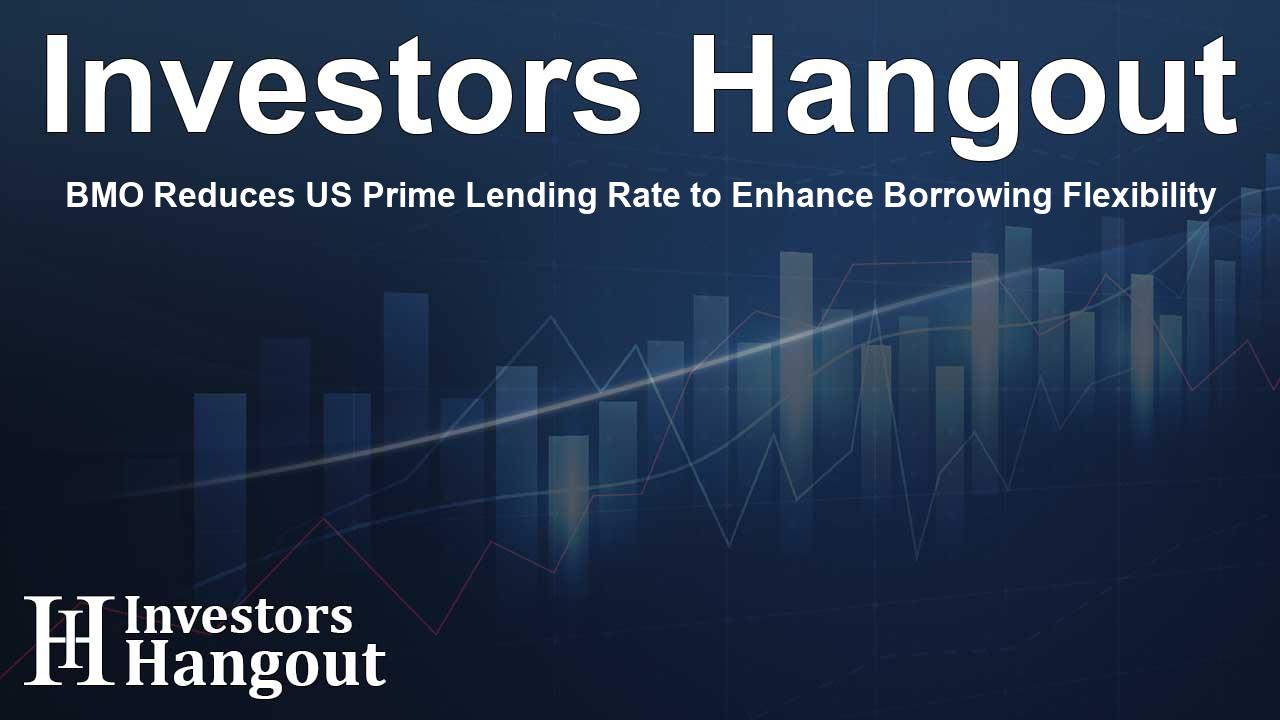BMO Reduces US Prime Lending Rate to Enhance Borrowing Flexibility

BMO Financial Group's New Prime Lending Rate
BMO Financial Group has made a significant decision to lower its US prime lending rate. The rate will decrease from 7.75 percent to 7.50 percent, effective immediately. This change highlights BMO's commitment to providing competitive financial products while fostering economic growth for its customers.
Understanding Prime Lending Rates
The prime lending rate is a critical economic indicator as it serves as a benchmark for various loan products, including mortgages and business loans. By adjusting this rate, BMO not only influences the cost of borrowing for its customers but also strengthens its position in a competitive banking marketplace.
Impact on Consumers
The reduction in the prime rate means that borrowers can expect lower interest rates on loans. This move will likely encourage both individual and business clients to consider taking out loans or refinancing existing loans, ultimately stimulating economic activity.
BMO’s Commitment to Positive Change
BMO Financial Group is deeply committed to a purpose-driven approach to banking. With a legacy spanning over two centuries, the organization continues to prioritize sustainable practices and social responsibility. Their mission revolves around the commitment to 'Boldly Grow the Good in business and life', positioning them as a leader in promoting economic inclusivity and a sustainable future.
About BMO Financial Group
BMO Financial Group stands as North America's eighth largest bank by assets, boasting approximately $1.41 trillion in assets. With a dedicated workforce of highly engaged employees, the bank provides a wide array of personal and commercial banking services, wealth management solutions, and investment banking products to 13 million customers. This global footprint extends beyond Canada and the United States into select international markets, reinforcing their brand as a trusted financial partner.
Future Outlook
With the recent changes to the prime lending rate, BMO remains poised for future growth initiatives. The financial institution is adapting to the evolving demands of clients by offering innovative financial services and meeting the needs of modern banking consumers.
Frequently Asked Questions
What is the new prime lending rate set by BMO?
The new prime lending rate set by BMO is 7.50 percent, down from 7.75 percent.
When did the new lending rate take effect?
The reduced lending rate is effective immediately as part of BMO's recent announcement.
How does the prime lending rate affect borrowers?
The prime lending rate serves as a benchmark for loan products, affecting the interest rates borrowers pay on loans.
What services does BMO Financial Group offer?
BMO offers a broad range of personal and commercial banking services, wealth management, and investment banking solutions.
Why is BMO reducing its prime lending rate?
BMO is reducing its prime lending rate to support its customers and enhance borrowing flexibility in a competitive financial environment.
About Investors Hangout
Investors Hangout is a leading online stock forum for financial discussion and learning, offering a wide range of free tools and resources. It draws in traders of all levels, who exchange market knowledge, investigate trading tactics, and keep an eye on industry developments in real time. Featuring financial articles, stock message boards, quotes, charts, company profiles, and live news updates. Through cooperative learning and a wealth of informational resources, it helps users from novices creating their first portfolios to experts honing their techniques. Join Investors Hangout today: https://investorshangout.com/
Disclaimer: The content of this article is solely for general informational purposes only; it does not represent legal, financial, or investment advice. Investors Hangout does not offer financial advice; the author is not a licensed financial advisor. Consult a qualified advisor before making any financial or investment decisions based on this article. The author's interpretation of publicly available data shapes the opinions presented here; as a result, they should not be taken as advice to purchase, sell, or hold any securities mentioned or any other investments. The author does not guarantee the accuracy, completeness, or timeliness of any material, providing it "as is." Information and market conditions may change; past performance is not indicative of future outcomes. If any of the material offered here is inaccurate, please contact us for corrections.